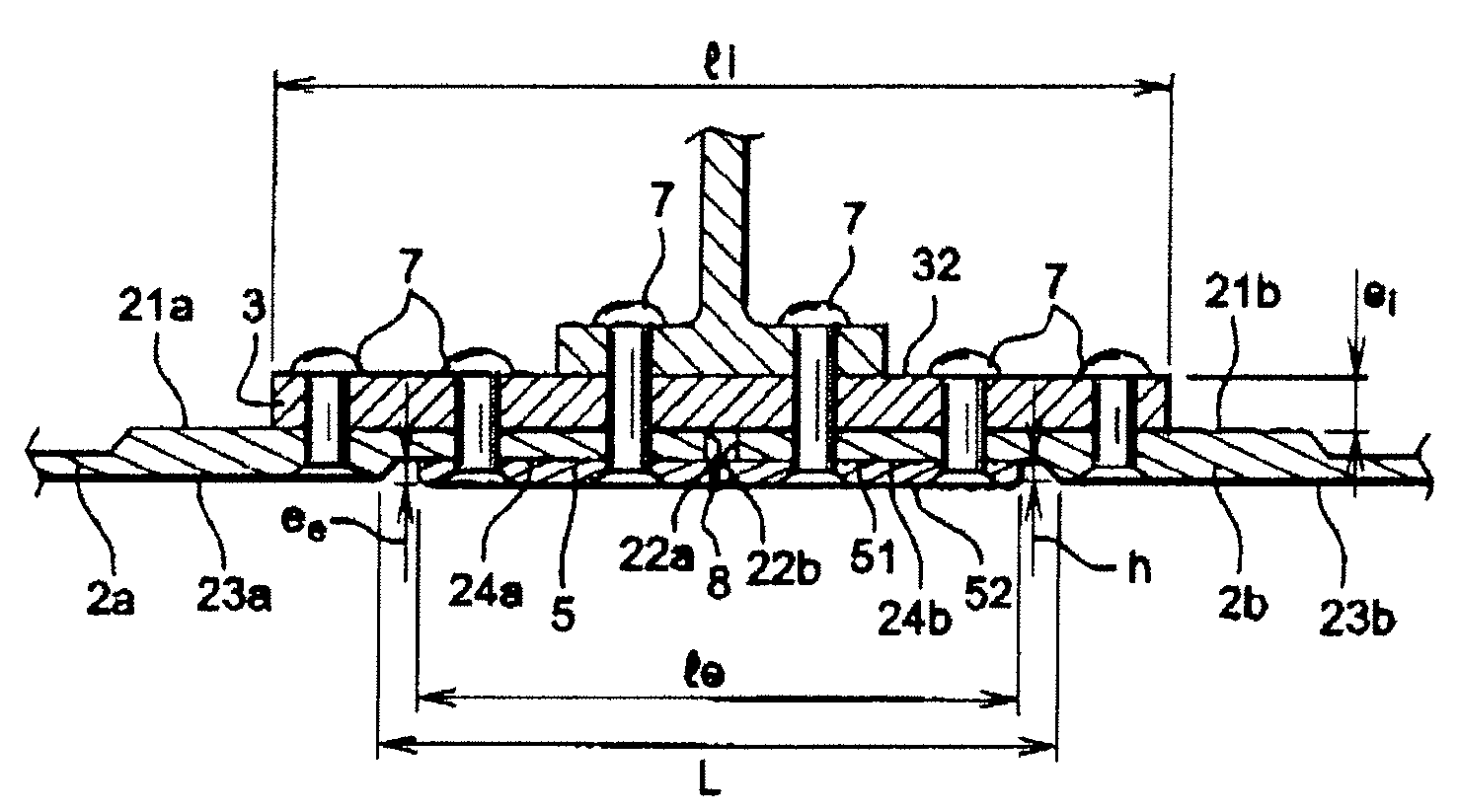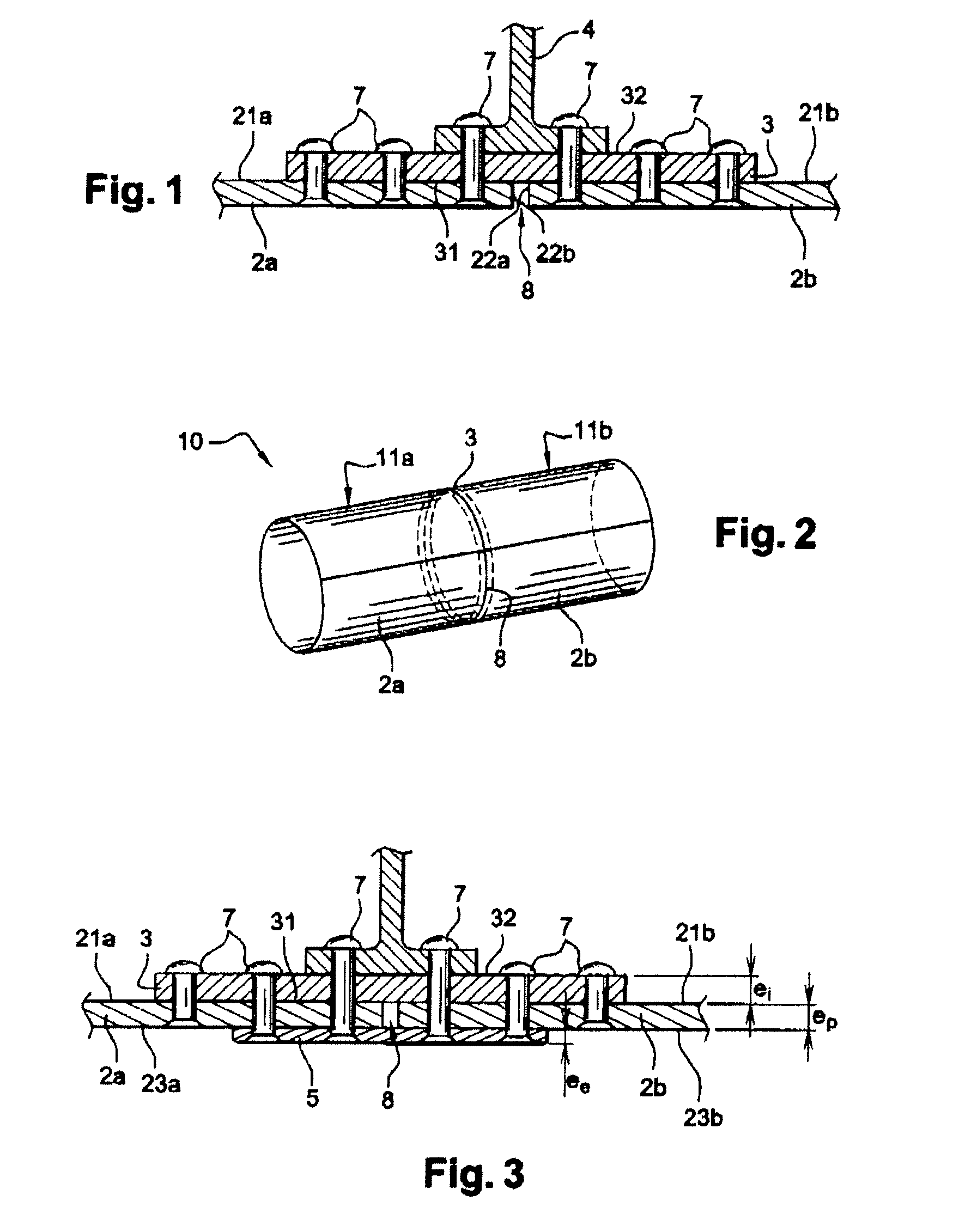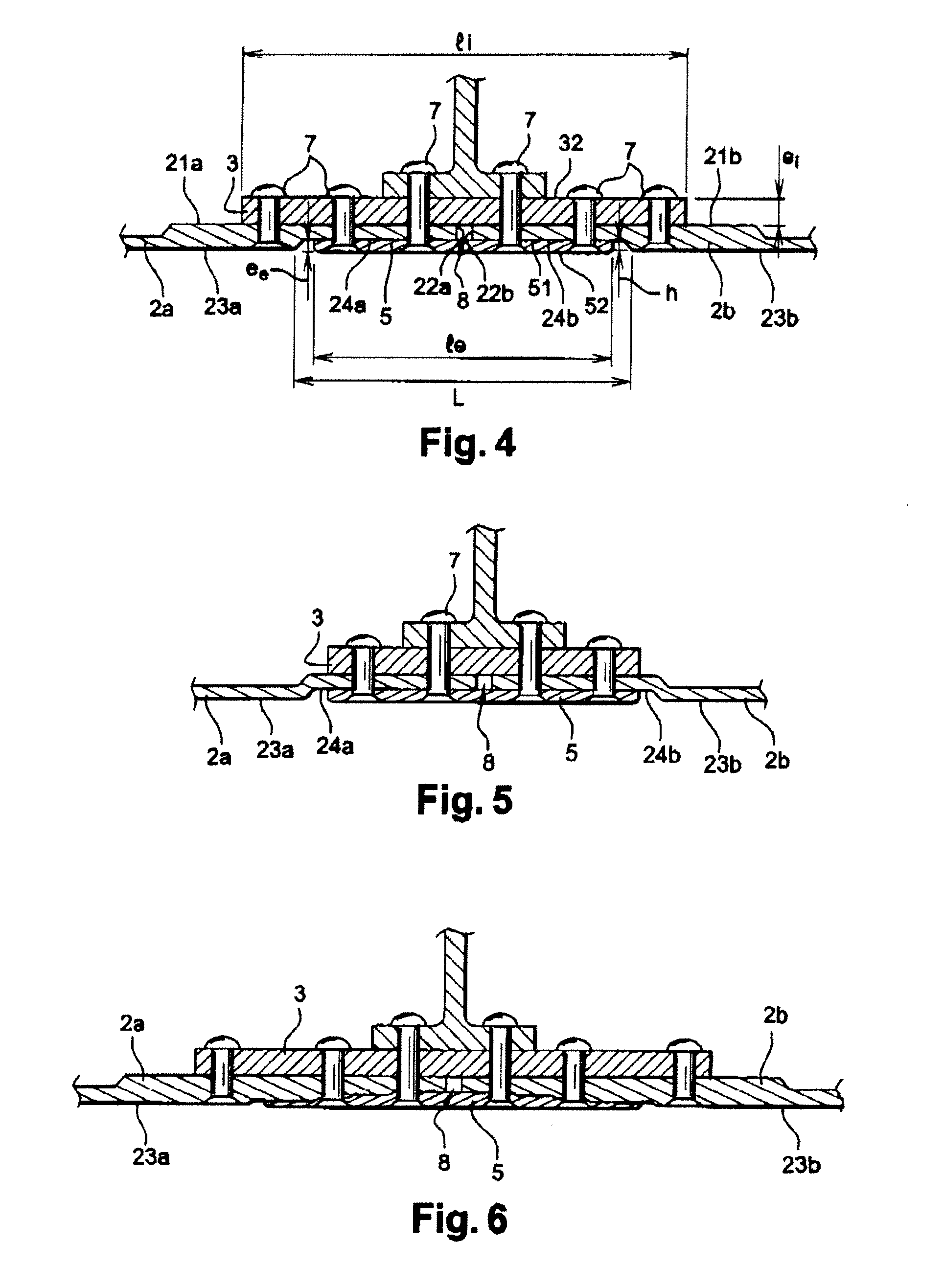Assembly of panels of an airplane fuselage
a technology of aircraft fuselage and assembly, which is applied in the direction of railway bodies, transportation and packaging, and window arrangements, etc., can solve the problems of inconvenient assembly between said two panels, insufficient use of said ring, and virtually inevitable and rapid appearance of fatigue cracks under alternating stress, so as to reduce the protruding portion of the outer ring and improve the aerodynamics of the aircraft fuselag
- Summary
- Abstract
- Description
- Claims
- Application Information
AI Technical Summary
Benefits of technology
Problems solved by technology
Method used
Image
Examples
Embodiment Construction
[0032]An aircraft fuselage 10, as schematized in FIG. 2, is made by the assembly of at least two sections 11a, 11b, at a circumferential join 8. Each section is made with at least one panel 2a, 2b, for example of a metallic material or of a composite material. At the circumferential join 8, the panels 2a, 2b, with a thickness ep, are assembled together by a ring 3, situated on the inside of the fuselage, called the inner ring.
[0033]The exemplary embodiment of the disclosed embodiments is described in the case of an assembly of two panels at a circumferential join, in an embodiment to suit the case of a contact zone with an aerodynamic flow, the direction of said flow being substantially perpendicular to the circumferential join in the zone in question. The disclosed embodiments may be applied to any assembly of panels apart from a circumferential join, such as for example, although of less value, at a longitudinal join, said longitudinal join corresponding to a generatrix of the fus...
PUM
 Login to View More
Login to View More Abstract
Description
Claims
Application Information
 Login to View More
Login to View More - R&D
- Intellectual Property
- Life Sciences
- Materials
- Tech Scout
- Unparalleled Data Quality
- Higher Quality Content
- 60% Fewer Hallucinations
Browse by: Latest US Patents, China's latest patents, Technical Efficacy Thesaurus, Application Domain, Technology Topic, Popular Technical Reports.
© 2025 PatSnap. All rights reserved.Legal|Privacy policy|Modern Slavery Act Transparency Statement|Sitemap|About US| Contact US: help@patsnap.com



